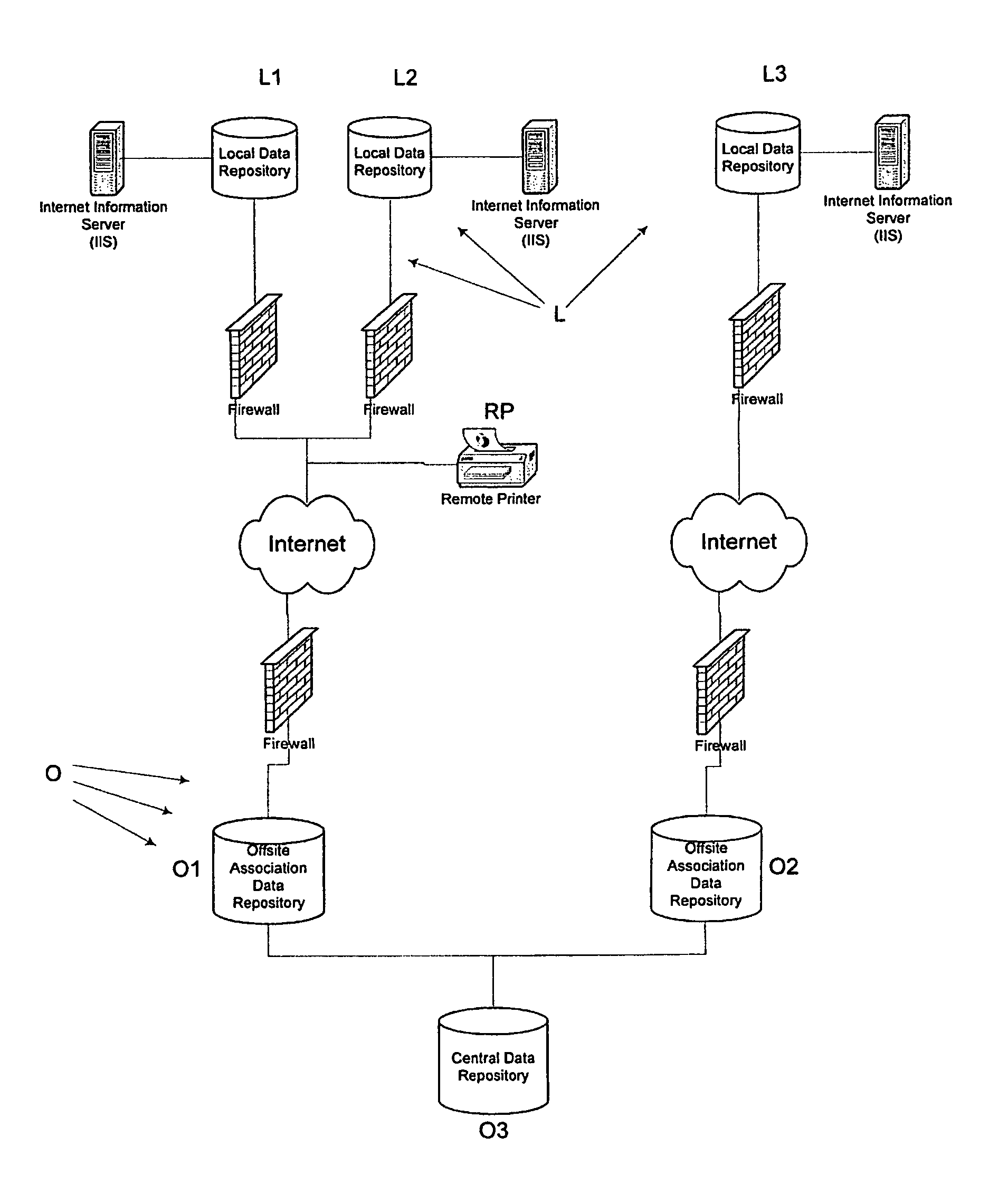System and method for analyzing and improving business performance
a business performance and analysis system technology, applied in the field of system and method for improving business performance, can solve the problems of multiple patient charts having redundancies, missing information between charts, and many new problems and constraints, and achieve the effects of improving business performance, cost, performance and organization, and improving business productivity
- Summary
- Abstract
- Description
- Claims
- Application Information
AI Technical Summary
Benefits of technology
Problems solved by technology
Method used
Image
Examples
Embodiment Construction
[0031]To facilitate the description of the invention, it is worthwhile to define some terminology solely for this purpose. This terminology is somewhat arbitrary and should not be construed as limiting the generality of the invention. For the purpose of this description:[0032]1) Association is meant to be understood as a business entity. Such an entity could be a single business, or it could be a group of businesses all owned by the same single business entity.[0033]2) Association data repository represents the electronic data and information belonging to a specific business entity.[0034]3) Data repository means an electronic collection of data and information that may be stored on one computer or stored on multiple computers, all networked together.[0035]4) Inputs and interfaces include any available manual or technological means for entering data into the data repositories.[0036]5) Software programs and / or applets are meant to include any software program or portions of a software...
PUM
 Login to View More
Login to View More Abstract
Description
Claims
Application Information
 Login to View More
Login to View More - R&D
- Intellectual Property
- Life Sciences
- Materials
- Tech Scout
- Unparalleled Data Quality
- Higher Quality Content
- 60% Fewer Hallucinations
Browse by: Latest US Patents, China's latest patents, Technical Efficacy Thesaurus, Application Domain, Technology Topic, Popular Technical Reports.
© 2025 PatSnap. All rights reserved.Legal|Privacy policy|Modern Slavery Act Transparency Statement|Sitemap|About US| Contact US: help@patsnap.com



